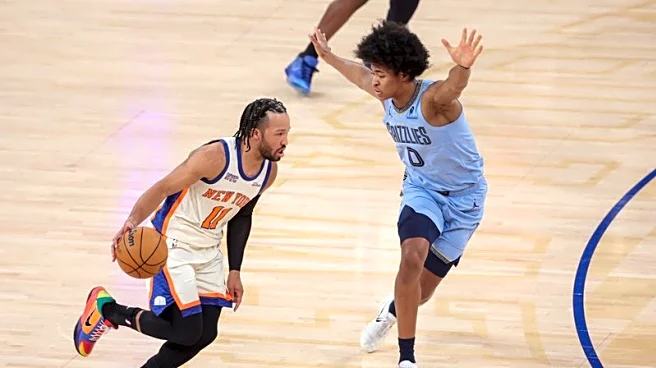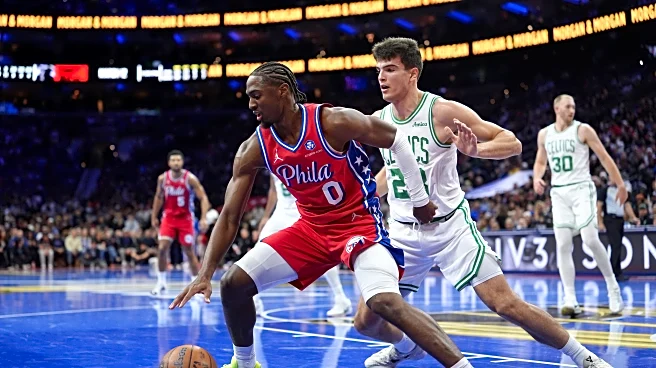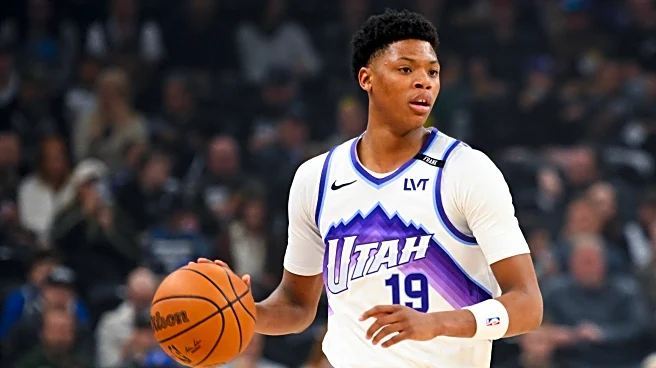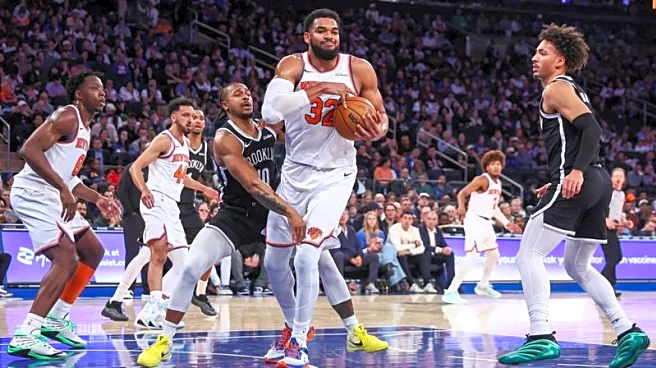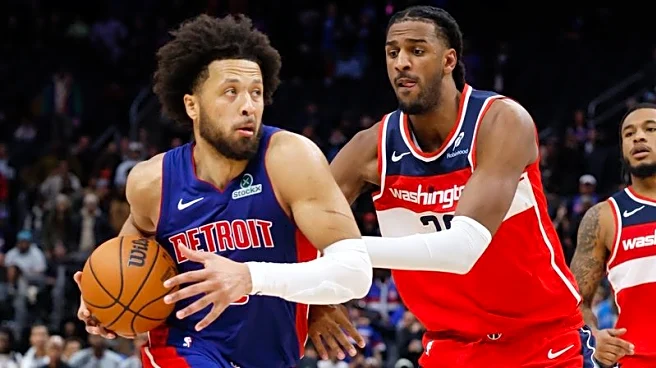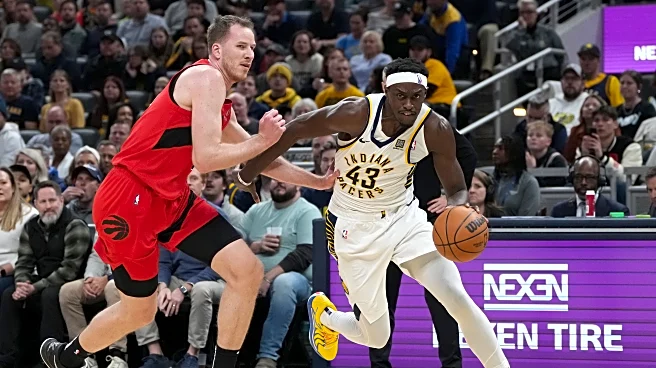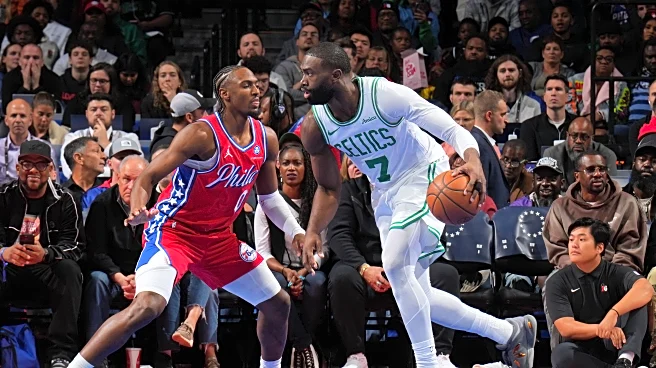The first round of OVR ranking updates in NBA2K have finally been released, and with it, some necessary adjustments have occurred. Earlier in the year when the rankings were released, we took the opportunity
to look at the Raptors ratings, the ones that were way too high and the ones that were way too low. Now, we can look at what’s been fixed and what hasn’t…
Big Ups…
Starting with the Raptors, there was a little shuffle with most of the roster. This is on par with most teams, as the individual scores only changing a point or two is usual for the first update of the year:
- Scottie Barnes – 86 OVR (+1)
- Brandon Ingram – 85 OVR (+1)
- Immanuel Quickley – 79 OVR (-2)
- Jakob Poeltl – 79 OVR (-1)
- Collin Murray-Boyles – 77 OVR (+5)
- Gradey Dick – 76 OVR (-2)
- Jamal Shead – 74 OVR (+1)
- Jamison Battle – 74 OVR (+3)
- Ja’Kobe Walter – 73 OVR (-1)
Both Scottie and BI saw a jump, a nod to the nice start to the season both guys have had. With Scottie averaging almost 20-7-5 per game and BI close behind him with 21-6-4, their defence and play has been really solid for the Raps. These are definitely trending in the right direction and it’s nice to see them getting a more respectable rating.
CMB had the largest jump of the team, although this shouldn’t surprise anyone as rookies usually are underrated coming into the league, especially when they’re not high picks. The +5 is the largest for the Raptors and one of the most significant in the update as well, but with the strong start he’s had, especially on the defensive end, this makes sense. Now he sits 8th among rookies, a solid show of respect as he averages almost 9-4-1 so far.
… and Big Downs
Poeltl and Walter both went down one, although they’ve had rough starts to the season. Poeltl’s back had him looking off and missing time, and Walter has struggled to crack the rotation. To be honest, I’m surprised it didn’t drop even more.
The biggest fallers for Toronto were Quickley and Gradey though, both dropping 2 OVR. Quickley has come under a bit of scrutiny, averaging only 14 points on some hot and cold shooting. He’s done a good job facilitating though, averaging 6 assists per game. This new OVR places him below the top 100 players (which I don’t agree with), and alongside guys like Herb Jones, Aaron Wiggins, and Bilal Coulibaly (which feels kind of disrespectful).
In the next update, I would suspect we’ll see a recovery for Poeltl and Quickley, and another jump from Ingram, but likely not as much movement as this one.
Most of the biggest risers around the league were the rookies. Since they’re coming in untested, it makes sense to see plenty of fluctuation now that we’ve seen how they measure up against NBA-calibre talent.
The Rookies and the Vets
VJ Edgecomb, the current frontrunner for Rookie of the Year, saw a very deserved jump. Up 5 to an OVR of 81. He has had some phenomenal performances already and is averaging 17-6-5 and leading rookies in many statistical categories.
Cooper Flagg was one of the rookies whose OVR dropped, now at 80 (-2). After the abysmal start to the season Dallas has had, he’s averaging only about 14-7-3. He hasn’t had much help at either end of the floor, and when compared to other players around the league, 80 still feels like it’s inflated due to expectations and might still see some fallout by the next update. He’s in a tricky spot in Dallas but has underwhelmed and his OVR is reflecting that.
Cedric Coward saw the biggest improvement, now at an 80 (+8) after an excellent start for the Grizzlies. Averaging 15-6-3 on 55% shooting, he’s already had a double-double, and set a career high of 27 points against Indiana. Definitely a well-deserved jump for the rookie.
Jeremiah Fears, Kon Knueppel, Ryan Kalkbrenner, Sion James, and Will Richard all saw significant jumps as well, given the strong start to the rookie campaigns they’ve had. Ace Bailey was the most significant faller, dropping to 73 (-4), a somewhat harsh drop although expectations were high and he’s underwhelmed.
For older players, Cam Spencer – 74 (+6) , Keyonte George – 82 (+4), Jake LaRavia – 78 (+4), Reed Sheppard – 76 (+4), Ajay Mitchell – 79 (+6), and Josh Okogie – 75 (+5) were some of the biggest risers, all nods to the improvement we’ve seen so far.
Tyrese Maxey saw a jump to an OVR of 89 (+3) who was my #1 for guys who were underrated to start this season. I wouldn’t be shocked if both see more upward movement before long, especially with the games he’s been having already and the load he needs to carry for Philly. The other two “players who were rated too low” were Jalen Johnson who saw a +4 to his OVR and Aaron Gordon who saw a +1. Both well deserved. Lauri Markkanen – 87 (+3) also saw a well-deserved increase.
There weren’t as many drops as expected, especially for players who were ranked (in my opinion) too high to start the season.
Julius Randle saw another jump to 88 (+2) but has had an excellent start, averaging 26-7-6. Amen Thompson remains at 87 (still too high in my opinion), and Kawhi, who has managed to play six games already this season, stays at 92.
There were still some fallers though, with Joel dropping to 90 (-2) after his slow start, mirrored by Myles Turner at 81 (-2) who is adjusting to playing with the Bucks.
Boston had a pair of fallers in Anfernee Simons and Derrick White, both dropping 3 to 78 and 84, respectively. In reality, that’s probably closer to where they should be, but the added “we won the championship two years ago” OVR inflation is starting to wear off.
The Knicks saw KAT fall to 90 (-2), Josh Hart fall to 78 (-3) and Jordan Clarkson fall to 76 (-2) with their disappointing start to the season as well.
Now, a month into the season, guys are starting to get their legs, gel with new teams, and carve out their role. It will be interesting to see if the risers are able to maintain these new marks and if the fallers are able to get some redemption as we head into December.
10 Years of Change
A little more than 10 years removed from what is frequently held as the best 2K game of all time, considerable changes have been made to the franchise, and the way they choose to rate their players. 2K16 was marked for the Raptors by the inclusion of the ‘99-’00 team with Vince Carter and Tracy McGrady as part of the lineup of classic teams offered for play, as well as the 2015-16 Raptors team led by Kyle Lowry and DeMar DeRozan.
The star guard and wing were tied for first place in the Raptors ratings at 83 a piece, a significant jump from the team’s third highest rated player, DeMarre Carroll at a 79. The rest of the top 5 was rounded out by Jonas Valanciunas at a 78 and Luis Scola and James Johnson both at 75, a relatively stark drop-off. With Lowry and DeRozan as the two lone All-Stars in the season, and JV pulling in a near double double, those ratings made sense, but considering DeMarre Carroll’s injury-riddled season, and star of our old column “James Johnson Watch”, James Johnson, snagging only 5 points per game, it’s a bit of a rough look for the virtual Raptors of ten years ago.
Barnes and Ingram, sitting at 86 and 85 overall as the two highest rated players in 2K26, eclipse the budding versions of Lowry and DeRozan digitized in 2K16. Now, is this a fair assessment? Statistically, Scottie makes sense at an 86, with a well-rounded game that’s perhaps just short of the All-Star level game that’s found at 90 overall and above in 2K26, and sits as the 48th highest rated player in the game. But, in 16, you’ve got DeRozan and Lowry sitting at 33rd and 37th respectively. Worse ratings, but higher relative rank. So… what gives?
Overall increase in ratings in the 2K games has been a consistent factor throughout recent entries in the series. 2K26 has 23 players who are rated 90 overall or higher, whereas 2K16 only has 6. In some cases, the way these video games measure player success has become considerably more generous. The first player to fall short of the 90 rating in 2K16 was Russell Westbrook, First Team All-NBA averaging a double double with points and assists. The first 89 overall baller in 2K26, on the other hand, is Evan Mobley, coming off a defensive player of the year season, Second Team All-NBA, and making the All-Defensive First Team. Pretty similar resumes. But, if Russ is the sixth best player, and Mobley is the twenty-sixth, are there actually twenty players better than 2016 Westbrook in the modern era?
Inflation Explanation
The answer, is not that simple. There are some clear cases of players’ ratings being wildly out of proportion with their actual abilities, such as Ja Morant’s egregious 89 rating despire barely posting 20 points per game on a middling Grizzlies squad this year. The same can be said for Joel Embiid, whose production has fallen off of a cliff this season, but still retains a 90 overall status. Tyrese Maxey is having a true superstar year so far, averaging 33 points per game, but is the 29th highest rated player in the game, at more or less the same rating as DeRozan from 10 years ago, nowhere near that level of scoring. Clearly, there is a divorce between on-court production and rating in 2K, with a heavy bias for those with big names and previous years of good play. But, this also reflects a genuine change in what NBA basketball looks like. Players are putting up more points in the 25-26 season than they did in the 15-16 season, a reflection of the evolution of the league, and the increase in volume amongst contemporary stars. That said: the lack of consistency throughout the series is admittedly frustrating. Quickley, sitting at a 79 overall, is considered to be at the same as DeMarre Carroll, who put up eleven points and four boards per game, while Quickley is a respectable point guard putting up more points and assists, and roughly the same number of boards as a guard.
An internal consistency is not present in the ratings of the 2K franchise. The scale has shifted throughout the long history of the video games series, but we have reached a point where the series does not properly reflect the state of the NBA in the way that a simulation video game should. Ten years is a long time in basketball, and the landscape of the league is considerably different than what is was in the mid-2010s. But, the rating stinginess of the old games compared to the generosity and lopsidedness of the most recent entry boggles the mind to consider.


